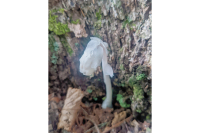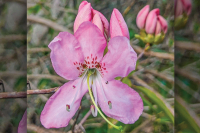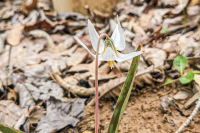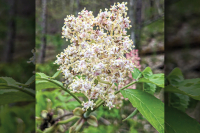The Joyful Botanist: Fall Wildflower Color
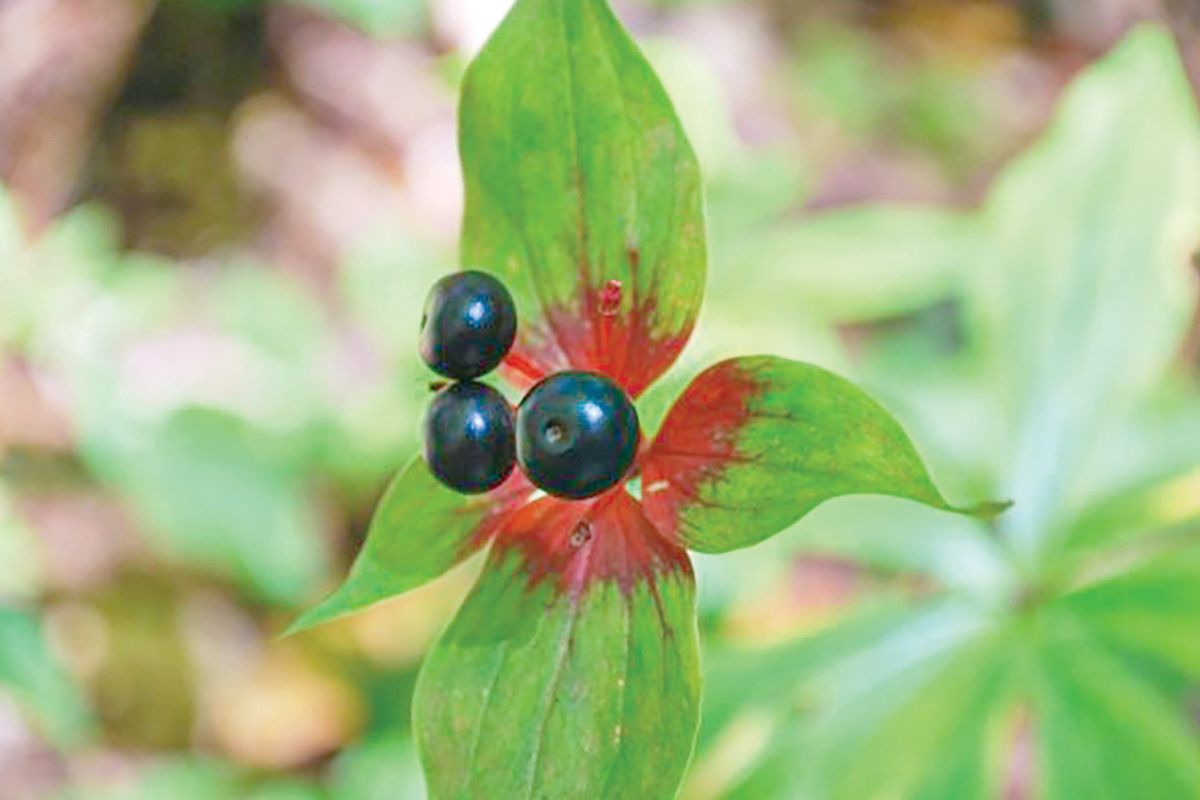 Medeola virginiana. Adam Bigelow photo
Medeola virginiana. Adam Bigelow photo
When it comes to fall leaf color, trees are what comes to mind for most. Sure, trees are big and there are lots of them. In Autumn when the leaves change they attract a lot of attention and draw tens of thousands of visitors. Most articles and reports about fall color are referencing trees, and possibly some shrubs. I’d like to show some love for the beautiful changing colors of herbaceous plants on the forest floor.
Walking in the fall woods, it is easy to be stunned by the bold reds, oranges, yellows and browns of the woody trees and shrubs showing off in their dazzling display. As per normal for me, though, I find my gaze drawn downward to the subtle color shifts in the leaves of wildflowers. The process is very similar for perennial flowers as it is for shrubs and trees who are pulling in the green chlorophyll to store in their roots to be reused in next spring’s growth, thus leaving the other chemical colors the opportunity to express themselves before dormancy sets in.
I love the maroon and purple leaves of a late blooming goldenrod (Solidago spp.), especially set against the vivid gold of their flowers. Other favorites include heal-all (Prunella vulgaris), asters (Symphyotrichum and Eurybia spp.) and the golden leaves of Balsam Mountain gentian (Gentiana latidens) set against their dark purple flowers.
Among my favorite wildflowers in general, and especially for their color in the closing of the year, is cucumber root, a.k.a. indian cucumber (Medeola virginiana). Commonly found in the mixed hardwood forest of Southern Appalachia, this plant actually ranges from southern Alabama and north Florida, all the way up to northern Maine and can be found in 71 of the 100 counties in North Carolina.
Easily identifiable by its interesting growth habit, cucumber root emerges in the late spring on a single thin stalk. Growing only around 20 inches in height, the first set of leaves are arranged in a whorled pattern with seven to nine leaves emerging from the same point or node along the stem. Once the plant has reached reproductive age another whorl of leaves, this time with only three leaves, emerges above the lower whorl.
Small, yellowish green flowers emerge in mid to late spring and are displayed nodding under the upper whorl. To get a good view of these flowers you need to flip the upper whorl over or lay on your back on the forest floor to peer upward at them. The flowers are nodding downward in hopes of attracting low-flying and ground-crawling insects for pollination.
Related Items
Once the flowers have been pollinated, and as the berry begins to ripen, the plant lifts the fruit up and into an erect position above the upper whorl. This is a brilliant adaptation, for if the berry hung under the whorl, fewer birds (if any) would be able to see the fruit and its seed dispersal would be highly reduced. The berries ripen to a dark purple and are held aloft.
To help attract birds, the upper whorl of leaves begins to change from green to a vivid red, starting at the base of the leaf and slowly spreading outward to the tip. Again, a brilliant adaptation as the almost black fruits stand out distinctly over the red backdrop of the leaves.
The contrast of the dark fruits over the red leaves makes this beautiful plant shine. Cucumber root is so named because of the small, sweet and delicious root that tastes like a freshly picked cucumber. I do not advise harvesting this beautiful plant as it would take sacrificing entire populations to get enough for one salad. This plant is best left growing of its own accord.
(The Joyful Botanist leads weekly wildflower walks most Fridays and offers consultations and private group tours through Bigelow’s Botanical Excursions. This email address is being protected from spambots. You need JavaScript enabled to view it..)





